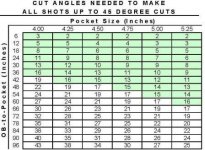When I was at college one of the very few things I remember from my Applied Engineering mathematics classes was this:
In order to differentiate between a Mathematician and an Engineer you draw a line in front of them. Two paces beyond that line you put a beautiful and naked member of the opposite sex. You instruct them that in order to take advantage of this situation they are to take one pace forward, then 1/2 a pace, then 1/4, 1/8, 1/16, 1/32 and so forth. The Mathematician will state that they have already calculated there are an infinite number of fractions so therefore the task is impossible and not worth even attempting.
The Engineer will say "OK, so I might not get all the way there, but I'll get close enough."
In order to differentiate between a Mathematician and an Engineer you draw a line in front of them. Two paces beyond that line you put a beautiful and naked member of the opposite sex. You instruct them that in order to take advantage of this situation they are to take one pace forward, then 1/2 a pace, then 1/4, 1/8, 1/16, 1/32 and so forth. The Mathematician will state that they have already calculated there are an infinite number of fractions so therefore the task is impossible and not worth even attempting.
The Engineer will say "OK, so I might not get all the way there, but I'll get close enough."
Last edited:
